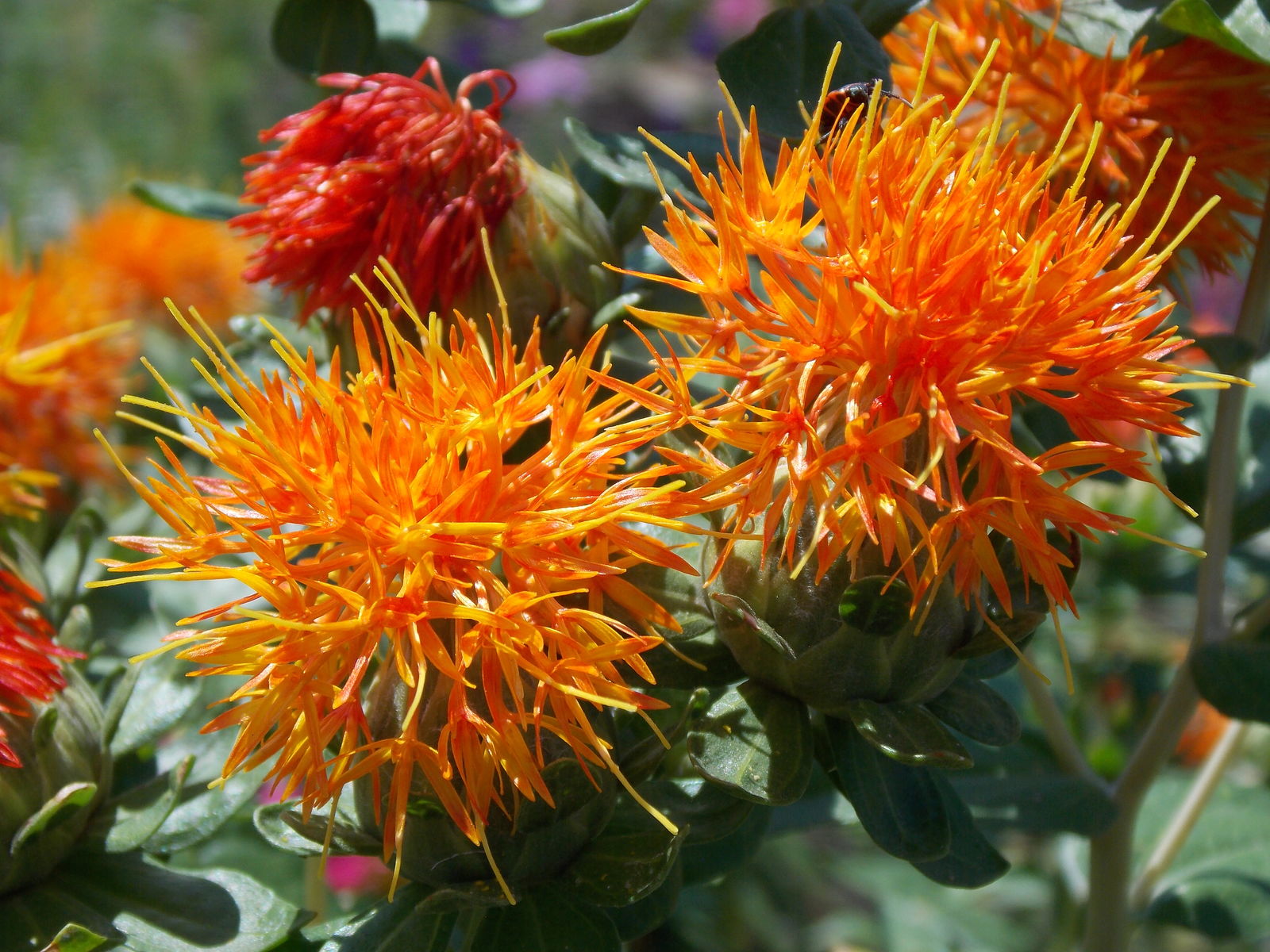Product review: Super high-oleic safflower oil
Written by Catherine Saxelby
on Wednesday, 11 May 2022.
Tagged: health, healthy eating, healthy lifestyle, nutrition, Product review, review

“What does super high-oleic mean?” I hear you ask. Also, “I haven’t heard of safflower for ages. What’s the deal?” Read on and all will be explained.
This post has been sponsored by Heart Smart (Plenty Foods).
What is it?
Safflower oil is made by pressing the seeds of Carthamus tinctorius, a tooth-leaved herb from the sunflower family. This plant has thistle-like orange or yellow flowers. Safflower is one of the oldest-known cultivated crops but, today, it is less well-known than sunflower or canola oil. It has been a highly valuable resource for thousands of years – first as a clothing and food dye, then as a cheap alternative to saffron, and now as a cooking oil. Safflower originated in Iran and Turkey.

This oil is made from Australian safflower seeds; it has no added sugar or salt, and is chemical- and preservative-free. No bleaches or solvents have been used during its production.
Two varieties of safflower oil are available: high-linoleic and high-oleic safflower oil. While high-linoleic safflower oil is rich in polyunsaturated fats, high-oleic safflower oil contains more MONOUNSATURATED fats. That’s the only real difference.
Taste: 5 out of 10
This is a light clear oil similar to that of blended vegetable oil, or canola or sunflower oil. You can’t compare the taste to a green thickish extra-virgin olive oil.
Safflower oil is used as a heat-stable cooking oil, especially for fried foods such as French fries and potato chips. This is because safflower oil has a high smoke point of about 232ºC (450ºF). In fact, safflower oil has a higher smoke point than other commonly used oils such as sunflower or canola oil. As a general rule, fats with a higher smoke point are better suited for sautéing and frying as they don’t break down.
Nutrition: 19 out of 20
The only ingredient is safflower seeds, which are grown in Australia. It has 4.5 Health Stars and is the only oil to boast such a high number.
The key nutrients are fat and fatty acids. Like all oils, safflower oil isn’t a good source of nutrients, although it is high in vitamin E.
What does “high-oleic” mean?
All “high-oleic” means is that the oil is high in monounsaturated fats (also called omega-9 fatty acids), similar to peanut oil/butter. Traditionally, safflower oil is high in polyunsaturated fats. The variety of safflower used in this oil has been bred to be lower in polyunsaturated and higher in monounsaturated fatty acids (more than 80%). It has been bred by the CSIRO using gene suppression.
According to the CSIRO, safflower is a relatively minor and underutilised crop in Australia, because the domestic market for safflower oil is currently small. In 2014, only about 10,000 hectares were grown, with the seed mainly being used for confectionery and birdseed.
The CSIRO uses gene silencing technology to switch off genes that control processes that limit the level of oleic acid within the safflower seed, thereby causing a build-up of the highly desirable oils.
Conventional breeding would switch these genes off throughout the whole plant, however, therefore having undesirable side-effects on the plant’s growth and overall survival.
Because the CSIRO’s gene silencing approach precisely targets specific genes within the developing seeds, the rest of the plant grows as it normally would, enabling a very high build-up of oleic acid content without the plant’s growth being compromised.
Super high-oleic safflower oil also has the lowest saturated fats (bad fats) compared to other oils on the market.
The oil has a smoke point of 266°C (510°F). This has been recently re-tested and verified.
Who would this product be suitable for?
- Anyone who loves cooking.
- Anyone who bakes or roasts at high temperatures over 200ºC (400ºF).
- Anyone who loves pan- or deep-frying.

Convenience: 8 out of 10
It is convenient because you simply pour the oil straight from the bottle. This oil comes from a modern processing plant located at Kingaroy, north-west of Brisbane in Queensland. You can dispose of the bottle or container in your bottle bin or via your local Council.
Sustainability: 8 out of 10
Safflower is native to arid environments, which only have seasonal rain. It grows a deep tap root that enables it to thrive in full sun in these harsh environments. It is hardy and easy to grow for Australian farmers, which potentially avoids the need to import oil from overseas.

Overall score: 40 out of 50 or 4 apples
More details at www.plentyfoods.com.au
The bottom line
We need to consume MORE of this oil, not less. Like peanut butter and olive oil, it’s high in monounsaturated fatty acids, which mean it is viewed as a “good fat”. It will compete with Australian-grown extra-virgin olive oil for your cooking needs.
PS. I am told a name change is on the cards. Plenty Foods did some research that indicated the current name doesn’t really say enough about what this oil is or does – and limits it to “heart health” and not other health benefits. The latest proposal is that it will be simply named “Safflower Oil”, with “Super High Oleic” as a product descriptor, but the packaging style and colour will remain the same.
Foodwatch
The Good Stuff
The Boring Stuff
© 2025 Foodwatch Australia. All rights reserved
Website by Joomstore eCommerce





